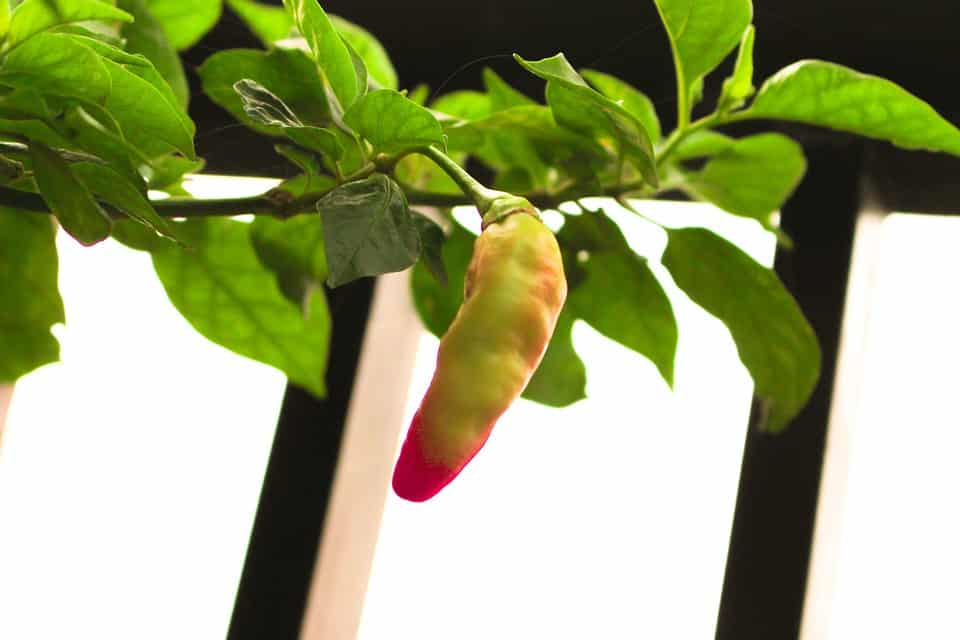As an Amazon Associate we earn from qualifying purchases.
You’re probably familiar with jalapeños, even if you’ve never tried them. The jalapeño is a type of chili pepper that has smooth flesh hanging down and is medium in size. Green jalapenos are most often eaten fresh, but they may also be left unpicked to mature and turn crimson, yellow, or orange. Jalapeño peppers are a type of mild pepper that grows in the United States. They’re not quite as hot as other well-known chili peppers, such as the Habanero or Poblano. However, can guinea pigs eat jalapenos?
Jalapeño is popular in the kitchen, but it might be difficult to offer dogs since they are not spicy at all. So, we’ll discuss the advantages and disadvantages of adding jalapeños to our guinea pig’s diet.
Can Guinea Pigs Eat Jalapenos?
No, guinea pigs can’t eat jalapenos. The heat and strength of jalapeños are too much for the delicate stomachs of guinea pigs. Guinea pig stomachs may become upset, cramped, or painful as a result of eating jalapenos. You can feed them fresh fruits such as kiwi and mango instead. Moreover, you can feed them green vegetables such as eggplant and celery. Plus, they love raspberries too.

However, guinea pigs should avoid eating hot and chili peppers, which is why bell peppers are acceptable. The beneficial component of jalapenos is that they are high in vitamin C as well as other compounds, which we will go through in the sections below.
The disadvantage of this is that, for the most part, jalapeños are merely hot to everyone. Consider what it would be like if the tiny guinea pigs ate these peppers.
The cavy couldn’t even inform you that this pepper was too hot, so it would merely make sounds and dance about the cage!
Are There Any Health Benefits Of Jalapenos For Guinea Pigs?
The guinea pigs are unable to consume the jalapeños, as we previously said. Guinea pigs have delicate digestive systems that would be harmed by these peppers.
However, if they could eat them, several of these advantages would be greater health, more antioxidants for a stronger immune system and scurvy prevention since they are high in vitamin C.
What Are The Risks Associated With Jalapeno Peppers For Guinea Pigs’ health?
Now, we will shed light on the potential risks associated with jalapenos for guinea pigs.

Jalapenos Can Lead To Urinary Complications
Jalapeño peppers, on the other hand, contain calcium and phosphorus. These two minerals are beneficial in the formation of strong bone tissues, but they aren’t particularly helpful for adult guinea pigs.
Excess calcium and phosphorus can harm the urinary health of guinea pigs. When calcium and phosphorus accumulate in guinea pig bodies, urinary stones, infections, bloody urine, or acute urination are possible.
Can Cause Gentle Digestive Systems To Become Upset
Even for us, the jalapeños are far too spicy and fiery. So, you can imagine that guinea pigs would create a lot of issues for them. For example, if the cavy tries the jalapeños, it will undoubtedly be in agony!
The upset stomach will be crampy, hurting, and bloated, the cavy might get diarrhea or panic in the cage panicking as a result. The digestive system of such a tiny and delicate creature is greatly disturbed by this.
Jalapenos Have A High Sugar Content
This incredibly hot jalapeno pepper is high in sugar. Even though it isn’t much, it is enough to upset the stomach even more. Because guinea pigs can’t break down carbohydrates well, any meal with sugars, especially hot peppers, would be a poor option.
Can I Feed Guinea Pigs Jalapenos That Are Moderately Hot Or Some Other Peppers?
Not really. Because all peppers are avoided, including those that taste spicy or hot, no peppers are allowed! Guinea pigs can eat bell peppers (in moderation owing to the amount of sugar).
Now, let us cover some facts about facts jalapenos.
Jalapenos: What You Need To Know!
- Around 40,000 acres in Mexico are set aside for jalapeño cultivation near the Papaloapan River.
- In Asia, India, China, Spain, and Peru are the primary growers of commercial chilies (known as jalapeños).
- The Aztecs were the first civilization to include jalapeños in their cuisine, drying and smoking them rather than eating them straight away.
- The pungency of jalapeños is ‘mild to medium’ in its mild form.
- Fresh jalapeños have a shelf life of 5 weeks, and they should be kept at a temperature of 45°F.
- Did you realize that jalapeños have been to space? The NASA shuttle carried these peppers!
- The leaves, flowers, stems, and seeds of the jalapeño may be used in a variety of ways. They can be dried, pickled, smoked, stuffed with cheese, or breaded and fried. In addition to that, they make delicious salsas and chilies.
- Alfredo Hernandez ate 16 jalapeños in one minute and is a Guinness World Records record-holder.
- In 8 minutes, St. Louisan Alexander Kwan ate 275 pickled jalapenos, breaking the previous record by a New Zealander!
- Jalapeños come in a variety of colors, including dark green and bright red.
- Jalapeños are grown in the spring when the air and soil are warm.
- When handling jalapeños, you must always use thin rubber gloves since these peppers can irritate the skin.

Now, we know that guinea pigs cannot consume jalapenos. However, humans can. Let us see how we as humans benefit from jalapenos.
Benefits Of Jalapenos For Humans
Jalapeños are high in Vitamin A and C, as well as potassium. They also include carotene, an antioxidant that may help protect against cell damage – as well as folate, vitamin K, and B vitamins.
Capsaicin is a chemical that occurs in red peppers and whose main function is to provide pain relief. It’s what makes the peppers hot.
People who ate hot peppers at least once a week were 13% less likely to die during the 19-year study compared to those who ate little or no peppers, according to one research. Capsaicin’s role in promoting blood flow and reducing obesity, as well as its ability to dilate blood vessels, may be involved.
Capsaicin is a pain-relieving agent that works best when applied to the skin directly. That does not imply you should stroke yourself with jalapeños. Anyone who has done so understands how painful it is.
If you want capsaicin’s pain-relieving properties, you’ll need to apply creams, ointments, or patches that include it. If you’re suffering from arthritis, tight muscles, or nerve discomfort, you might consider using capsaicin.